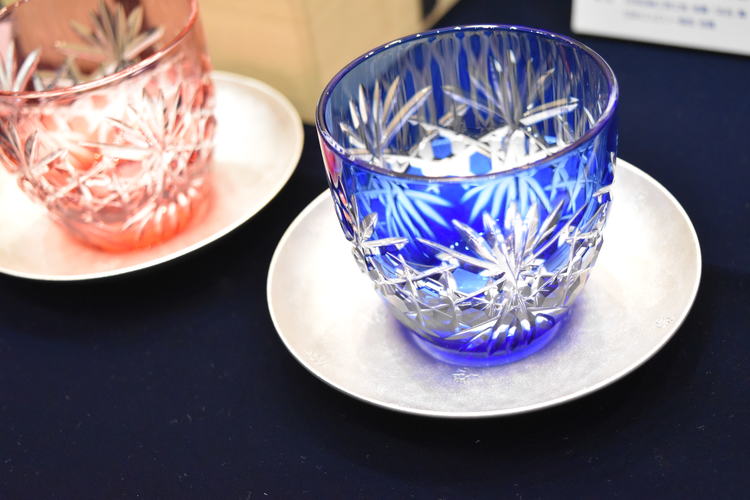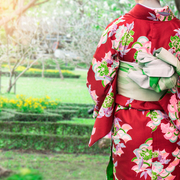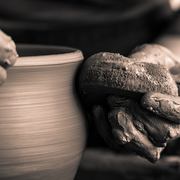“Edo Kiriko” is one of traditional Japanese crafts designated by the government and Tokyo municipality.
It refers to the techniques (or the pattern itself) of curving the surface of glass to create beautiful patterns on it.
The “Kiriko” is the work meaning glass cutting techniques.
Actually, there are many products and shops which have the name of “Kiriko” across the country, such as “Satsuma Kiriko”, “Kiriko Kobo”.
Among those, the name of “Edo Kiriko” is allowed to use only for the products certified by Edo Kiriko Cooperative Association. All products are required to keep the standard below.
1. Made of glass
2. Hand-made
3. Made mainly with rotating tools
4. Made in the area designated by Edo Kiriko Cooperative Association (*the whole district of Kanto based in Koto-ku ward)
The origin of “Edo Kiriko” came from the Edo period, the year of 1834, as you can tell from its name.

It is Kagaya Kyubei, who ran a vidro shop at Edo-Odenmacho, who first tried curving glass in Japan.
*Vvidro: Glass vessels introduced from Portugal and Netherlands to Nagasaki in the end of the Muromachi period, which had been used until the Meiji and the beginning of the Taisho period.
It is said that, in those days, he shaved a hard soda-lime glass with emery.
In the Meiji period(1867-1912), he founded Shinagawa Industrial Enterprise Glass Factory and invited the instructor of glass cutting from the United Kingdom.
In the Taisho period(1912-1926), the study on glass materials and Japanese unique glass cutting techniques.
The materials changed to crystal glass, which is easier to process, and spreading glassware helped improving the cutting techniques.
The techniques have pursued enhancing beauty and productivity, which was inherited today.
How to create beautiful “Edo Kiriko”
Glass materials for Edo Kiriko, is mainly “Irogise Glass (colored glass)”.
This glass is two-layered, and a transparent glass covered with thin and colored glass is well-known.
The refreshing color of blue and red are tinted on glass by melting metals like bronze and gold directly in glass.
After “Arazuri” and “Sanbangake”, cutting the glass with a diamond wheel machine, artificial whetstones and natural stones are processed to make the surface smoother.
After curving, “Migaki” and “Bafugake” with abrassives finish the glass to polish.
This polishing process was used to be handled manually, but recently the method of “acid polishing”, putting in a chemical, has widely used.
Various Meanings of the Beautiful Patterns Prosperity, Longevity, Talisman
Let’s walk through the traditional patterns of Edo Kiriko.
You may be surprised to have “I’ve seen this!”-experience here.
N anako (Fish scales)
Nanako is the design which can be seen on cut glasses in the United Kingdom and Ireland in the 18th-19th century.
Glass cutting techniques were also introduced when the Western culture come to Japan, and it can be concluded the improved techniques in Japan formed the basis of “Edo Kiriko”.
The pattern inspired by fish eggs and scales) implies wishes for prosperity.
K ikutsunagi (Chrysanthemum flowers)
The design represents chrysanthemum flowers meaning longevity.
It is used as the imperial crest, and has extremely lucky meaning.

R okkaku Kagome (Basket weave)
Hexagram has been said to have universal power to use as a talisman over the history.
The pattern of Rokkaku Kagome is formed by the hexagonal shape representing hexagram.
The patterns of “Kagome” have other styles such as square and octagon.
Today, it is said that the number of craftsmen working on “Edo Kiriko” is around 100*.
It is appealing to have various designs from various sources from the manufacturers with multiple craftsmen to private workshop.
Classical patter showing the taste of Japanese tradition, innovative pattern like modern art, creative pattern coming from craftsmanship…
The traditional beauty of Edo Kiriko will keep developing.
Why don’t you go and find your favorite work and craftsman?
*As of September 27, 2018
For Daily use and Gift to your loving one! How to choose your “Edo Kiriko”
“Edo Kiriko” is available not only at glassware, but also at various goods today, such as plates, flower vases.
You can also find the interior goods like lamp shades creating nice atmosphere.
Charm of “Edo Kiriko” will offer colorful choices for various purposes such as for daily use, for luxury decoration, or for gift to your loving one…
Now, how can we choose “Edo Kiriko” for each use?
These are three points to consider on choosing.
1. Materials: Soda-lime glass or Crystal glass
S oda-lime glass
Soda-lime glass has been used since the Edo period.
The characteristic is its lightness and robustness.
It is suitable for daily use since it is handy and practical.
C rystal glass
Compared with soda-lime glass, it is softer, which makes it have more complicated and elegant patterns.
Its perfect transparency is attractive and it is best for gift emphasizing design.
2.Patterns: Shape, Joint and Intersection
S hape
As for the design like Nanako, Kagome, which are formed by same shapes, it is important to check each shape is equal.
Isn’t diamond shape deformed to trapezoid? Isn’t square shape distorted?
“Edo Kiriko” is hand-made, so it is realistically impossible to have perfectly equal patterns, but it is better to pick up the one with well-formed design.
J oint
Designs have the spirals and saturated linework, which assembles cutting.
For this kind of design, check “the joint” at the center.
It is ideal with aligned cutline angles and beautiful radial patterns.
I ntersection
The “intersection” where two cut lines cross, is relatively easy to check.
Do the crossed lines have the same depth?
As cut lines are chevron, if the depth are the same, you will see beautiful cross sign at intersection.
Technically speaking, compared with “shape” and “joint”, it is easier to achieve, so this can be said to the minimum standard.

Manufactures: Makers or Individuals
M akers
Makers can mass-produce with the stable quality for one design.
It is suitable when you need the large number for gifts at parties as such.
I ndividuals
If you prefer originality, it is recommended to target individuals.
One and only item will give you the sense of tailored for you.
You can also find pieces made by craftsmen belonging to workshops.
Each has unique characteristics of each workshops. Some workshops stick to and preserve one design.
It would be better to have the sense of unity on your collection.
Summery
Traditional Japanese crafts may give you the image “it looks too expensive to have”, but “Edo Kiriko” have been used for the daily commodity since the Edo period.
There are various types available on materials and patterns today, for daily use or for artworks, which offers you a wide range of use.
Why don’t you enjoy the beauty of your own “Edo Kiriko”?
Life surrounded with traditional beauty of Japan will enrich your mind.

















